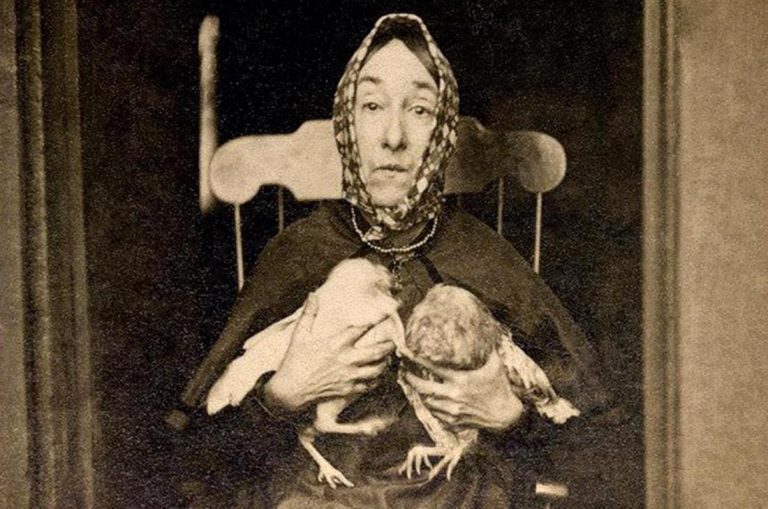
Early animal activist wrote:
Consider how you would feel yourselves to be crueled. The greatest sin is to cruel the poor harmless dumb creatures. They cannot speak, nor help themselves.
From Complete Edition of the Works of Nancy Luce (1875), published by Luce Publications
New York, N.Y. — Nancy Luce, a reclusive Victorian-era poet from West Tisbury, lived a life marked by solitude, chronic illness, and an extraordinary affection for her bantam hens. Once a misunderstood figure on Martha’s Vineyard, she eked out a modest living by selling self-penned poetry booklets to Methodist tourists visiting the island.
Today, her story has found a warm reception among locals. Her grave, adorned with chicken figurines, draws visitors, and the annual Nancy Luce Day has become a beloved tradition. Yet, amid this appreciation, her poetic works have largely escaped serious study.
Susan Johnson, a Martha’s Vineyard resident and recent master’s graduate from Northeastern University, seeks to change that. Her thesis, which examines Luce’s “Hen-Elegies,” offers the first scholarly dive into the poet’s artistry. “So much focus has been on her quirks or her role as a creative woman in a tough era,” Johnson explains. “But her poems deserve respect as art, not just footnotes to her eccentricity.”
Johnson’s work, titled Reading the Laments and Hen-Elegies of Nancy Luce: Labor, Duty, and the Power of Words, explores the poet’s writings on their own merits. For Johnson, a lifelong island artist, the project caps years of academic exploration and a personal connection to Luce’s creative spirit.
Johnson’s own path mirrors Luce’s in some ways. She began as a painter, trained at the Pratt Institute, and sold her artwork at the Chilmark Flea Market upon returning to the Vineyard. “I saw myself in her,” she says. “She was an entrepreneur, using her talents to survive.” After years studying philosophy, visual arts, and English in graduate programs, Johnson turned to Luce’s poetry. An earlier project analyzing Monet’s water lilies through a philosophical lens shaped her approach. “I love uncovering the vitality beneath familiar surfaces,” she notes. A visit to Luce’s grave sealed her resolve: “I told her I’d do this for her—and I did.”
In her analysis, Johnson frames Luce’s poems as laments, akin to the Psalms she likely knew well. These verses catalog Luce’s struggles—illness, isolation, and the devastating loss of her hens. In one poem, Trouble, Luce writes of neighbors who ignored her plight: “They never came to help in my sickness or ease my troubles… it wore me down, body and soul.” Johnson highlights the rhythm in these lines, seeing them as more than complaints. “Lament lets her turn pain into something brighter through her craft,” she says.
Johnson’s thesis also traces possible influences on Luce, from religious traditions to the domestic imagery woven into her work. She considers how the Vineyard’s shift from a quiet rural community to a tourist hub shaped Luce’s life. “The market went from spiritual seekers to sightseers chasing curiosities,” Johnson observes. “That’s a unique tension here.”
Now back on the island after earning her degree, Johnson teaches in the high school’s special education program. Her studies of language, perception, and Vineyard life inform her work. “I’m putting theory into practice,” she says. “It’s rewarding to bring what I’ve learned out into the world.”
Nancy Luce’s afterlife on Martha’s Vineyard thrives through chicken statues and festivals, but Johnson’s scholarship invites a deeper look—at a poet whose words, born of hardship, still echo with transformative power.
#NancyLuce, #MarthaVineyard, #HenElegies, #FolkPoetry, #VictorianEra, #WomenWriters, #IslandHistory, #SusanJohnson, #PoetryScholarship, #CreativeLegacy
Legacy and Poetry of Victorian-era Nancy Luce, of Martha’s Vineyard (Feb. 23, 2025)